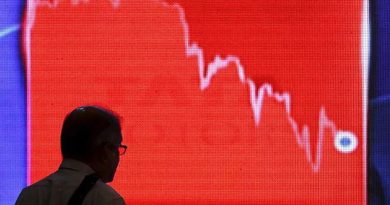How the coronavirus can “revolutionize” the world of vaccines | The NY Journal
[ad_1]
A promising technology in development for 30 years uses genetic engineering to create vaccines that are cheaper and easier to produce on a large scale. The new coronavirus created an opportunity for it to finally hit the market
The covid-19 disease is radically changing many things, one of them may be how vaccines work.
The pandemic has become an opportunity to test a new technology that has been in development for 30 years.
Some scientists are using genetic engineering to make our cells produce a part of a virus and thus teach our immune system to protect us from it.
This would allow creating vaccines in a much more quickto. They can even be more simple to manufacture and more safe to use. They are probably also more cheap.
We just have to prove that genetic vaccines, as they are known, they really protect us.
Opportunity?
It was never done. To date, there is no such vaccine approved for use in humans.
But two of the eight covid-19 vaccines that are in a more advanced stage of research use this technology.
One is manufactured by the companies Pfizer (United States), BioNTech (Germany) and Fosun (China). The other is being developed by the American company Moderna.
Both reached the third and final phase of human testing and are being applied to thousands of people to see if they are effective.
The prospects are promising, says Norbert Pardi, a professor and researcher at the University of Pennsylvania in the United States.
The studies carried out so far suggest that these vaccines generate a good response from our immune system and What are they suretos.
“We still need to see the results of the last phase, but I am optimistic. I think one or more of them will be approved. This has the potential to revolutionize the field of infectious disease vaccines, ”says Pardi.
How vaccines work
Most of the vaccines we use involve injecting a virus or bacteria into our bodies so that the immune system can identify the threat and create ways to defend ourselves.
In the case of viruses, they can be weakened (their ability to make us sick has been reduced to safe levels) or inactivated (they cannot reproduce).

There are also so-called subunit vaccines, in which only characteristic fragments of a virus, such as a protein, for example, are produced in the laboratory and purified for use in the vaccine.
The proposal for genetic vaccines is different. Instead of injecting ourselves with a virus or part of it, the idea is to make our own body produce the virus protein.
To do this, scientists identify the part of the viral genetic code that contains the instructions for making this protein and inject it into us.
Once absorbed by our cells, it functions as an instruction manual for the production of the viral protein.
The cell produces this protein and displays it on its surface or releases it into the bloodstream, alerting the immune system.
The advantages of genetic vaccines
Immunologist Cristina Bonorino explains that, in the case of attenuated or inactivated vaccines, it is necessary to cultivate a large quantity of virus to use it as raw material.
Genetic vaccines do not need this.
Simply just create the desired genetic sequence in the laboratory.
This requires a much smaller production structure.
“The cost is probably lower as well,” says Bonorino, who is a professor at the Federal University of Health Sciences in Porto Alegre and a member of the scientific committee of the Brazilian Society of Immunology.
Márjori Dulcine, medical director of Pfizer Brazil, a company that manufactures one of the genetic vaccines, explains that, in addition to the fact that this type of vaccine is produced more quickly on a large scale, it is also flexible.
“We know that SARS-Cov-2 has a great capacity to mutate. So if that happens, we can adapt quickly, ”says Dulcine.
Genetic vaccines also eliminate the risk of a person getting sick when vaccinated, which can occur when attenuated virus vaccines are used.
Viruses in this state have been manipulated to be less dangerous, but they can still reproduce slowly.
This gives a healthy person’s immune system enough time to react and learn how to combat that threat in the process.
But, in rarer cases, if the patient is immunosuppressed, he can lose this race against the virus and become ill.
“With this type of vaccine [genética] that doesn’t happen, because it doesn’t use a live microorganism. Is completely synthetic“Says Norbert Pardi of the University of Pennsylvania.
The time taken to develop a vaccine is also drastically reduced. It usually takes months to have a vaccine ready for the first tests. Genetic vaccines take only weeks.

“Modern took 42 days from the moment you received the genetic sequence of the virus to begin the studies of the vaccine against covid-19. This is almost impossible with other technologies, ”says Pardi.
The scientist also says that tests have so far shown that genetic vaccines against covid-19 have generated an immune system reaction at least as good as that of the other candidates.
“Therefore, they are not only safer and relatively cheap to produce, but they are also very effective. This is very important ”, he analyzes.
DNA vaccines vs RNA vaccines
But if these vaccines have so many advantages, why aren’t there any yet approved for use in humans? One reason is that technology is recent.
The first vaccine in history was created by British physician Edward Jenner just over 220 years ago, in the early 18th and 19th centuries, to prevent smallpox.
In contrast, genetic vaccines have been in development for little more than three decades, and only more recently have they started to show more encouraging results.
At first it was believed that it would be better to make this type of vaccine using DNA, molecule that contains all the genetic information of an organism and that our cells use to make the proteins that make up our body.
But for this to happen, DNA must first be transformed into RNA molecules, which carry that information to the part of the cell where proteins are made.
Scientists believed that by injecting the DNA of the virus into us, our cells could absorb it and, once inside them, transform it into RNA so that the protein could then be produced in that microorganism, which would initiate the immune reaction.
But the tests done so far have shown that DNA vaccines do not produce a strong enough immune response in humans.
“We don’t know exactly why,” says Pardi.
Another alternative is to use RNA directly. The problem is that this molecule is capable of generating a very strong inflammation that can kill us.
It is also much more unstable than DNA and is easily broken down in our bodies.
“We have in us, everywhere, enzymes that attack RNA. If it is injected without being protected, it is destroyed quickly ”, describes Jorge Kalil, director of the Immunology Laboratory of the Heart Institute (Incor).
But in the last 15 years, scientists have found a way to wrap around this molecule to prevent it from breaking down and reaching the cell. They also managed to reduce the inflammatory potential of RNA.
“The expectation is that sometime from now, when we master this technology, many vaccines in the future will be of this type ”, Kalil assures.
How are vaccines against covid-19?
The pandemic has created some conditions that are likely to accelerate this process.
Covid-19 is a new, highly contagious and deadly disease, for which there is no vaccine yet. Creating one is urgent.
It usually costs tens or hundreds of millions of dollars to do so, but now governments and organizations are spending a lot of money.
And when a vaccine is ready, countries around the world will be interested in buying it.

“The greatest difficulty in making a vaccine is money, because the technique is relatively simple,” says immunologist Cristina Bonorino.
“There are already patented RNA vaccines, but they have not been commercialized. The question is: does it have a market? Now there is a market and an unsatisfied need ”, he describes.
According to the World Health Organization, there are 40 genetic vaccines among the 187 that are being developed against covid-19. Ten are already being tested in humans and the two mentioned previously are in the last stage of this part of the investigation.
Moderna’s vaccine study involves 30,000 participants in the United States.
The Pfizer / BioNTech / Fosun research also has 30,000 volunteers in the US and other countries, including Brazil.
In both cases, companies were already developing RNA vaccines to fight other viruses.
In Moderna’s case, it was Nipah, a virus transmitted by bats that can cause life-threatening respiratory problems and brain swelling.
Pfizer and BioNTech were creating an RNA vaccine against influenza, which causes the flu.
The goal is to make our cells produce the coronavirus protein known as spicule, which has a great capacity to generate an immune system response.
“I think these vaccines have potential. Published results show that they induce the production of a large amount of antibodies that neutralize the virus. The final test will be to see if this protection is durable, ”says immunologist Jorge Kalil.
The Pfizer study will last two years, but the company expects to have the first results to present to regulatory agencies in late October and early November.
“The moment forces us to act quickly, safely and with quality. Our role is to present robust data to the authorities, ”says Márjori Dulcine.
“They are the ones who will tell us if they are enough,” he concludes.

.
[ad_2]
Source link



